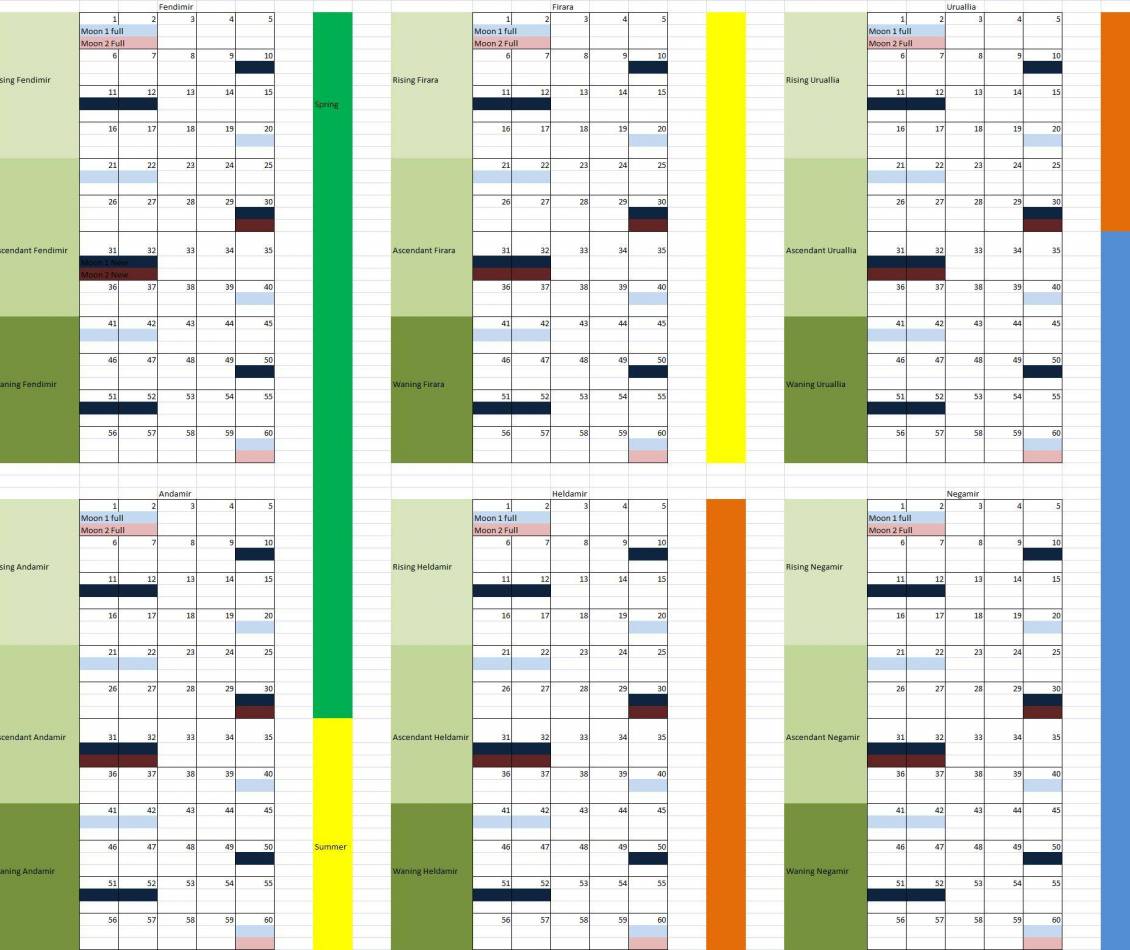Page Tools
Site Tools
User Tools
Login
You are currently not logged in! Enter your authentication credentials below to log in. You need to have cookies enabled to log in.
Topography and Climate
The settled world circles a great expanse of water, the center of which is nigh unnavigateable. The main continent circles around in a moon shape from the east reaching out to the west, separating into a massive chain of islands in the west. One of these islands, Menallia, is quite massive, and home to most of the human and half elven civilizations. The dwarven lands are concentrated in the central east, the elves have lands to the south, halflings tend to live in the north east, and the gnomes are almost entirely seafaring, serving as traders. There is a second island located to the far southeast, though it is a dangerous and cold place, uninhabited, and shunned. The continent and civilized lands as a whole tend to be warmer in the northern and western realms. Traveling across the ocean to get to it is a problem for most people, as civilization ends before reaching that coast. The farthest western part of the continent is a swampy archipelego, and the northern portion of the continent is a desert of increasing severity. It has not been well explored, and the city of Illian, centrally located on the costal northern waterway, is the prime northern civilzation. Wind patterns tend to circle in center of the continent, around the central, unpassible area. This is a minor tear in the planar fabric and provides easy access to the elemental plane of water. The trade winds in the inner sea cycle counterclockwise relatively quickly (5-6 times a year), and trade between the main civilization centers benefits from this greatly. The east is dryer than the west as a rule.
The Moons
Two moons circle the planet, one every 20 days, another every 60. The year is 360 days. The moons are both full at the new year, so there is a double new moon at days 30, 90, 150, 210, 270, and 330. The double full moon occurs at days 0, 60, 120, 180, 240, and 300. The moons affect the world strongly for about 3 or so days each double full moon, and only about 1 night for each double new moon. The new moon days are generally thought of as dark days of power. The double moon nights are powerful for most religions and lycanthrope alike. About 18 feast days a year are celebrated with the lunar cycle, and once each double full, enough moonlight permeates the world that lycanthrope remain under the moonlight for an entire day, so even during the daylight, they remain changed. This has been amazingly helpful in rooting out lycanthrope in civilizations, because they are unmistakable on the prime feast days. (note: this means missing a prime feast day is horribly bad politically for your character. If they want to maintain any measure of trust with locals, they should never miss prime-feast days).
Political Situation
Last year, there were many reports of the moons being cloudier than normal during the New Year’s celebration. This year, the moons were red. This has incited significant panic and malcontent among the nations. An increase in doomsday cults has been noted in many countries. The major centers of government claim there is nothing major amiss, and that this is all part of a natural cycle. However, it is noted that militaries across the world have been moved to heightened state of readiness.
Currently, the Elven Empire is the most expansionists of the major civilizations. Over the last century or so, they have been building their naval power and exploring the west and the impassible storms at swirl in the center of the Sea of Baas. The Dwarven mercenary troops are seeing greater mobilization and raising their prices as kingdoms tighten their defensive networks. The Gnomish Worldships are continuing to maintain trade as normal, but the rate of arms shipments has greatly increased.
